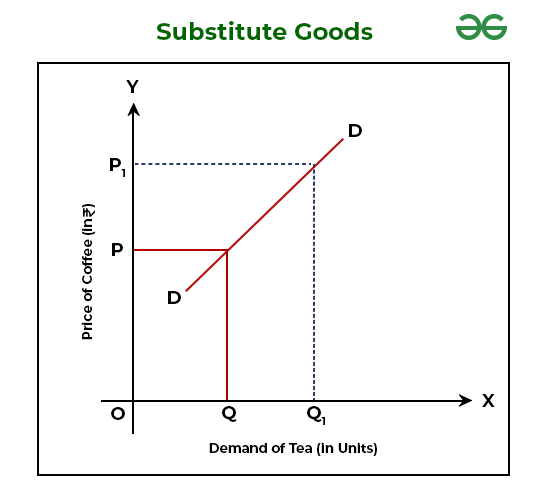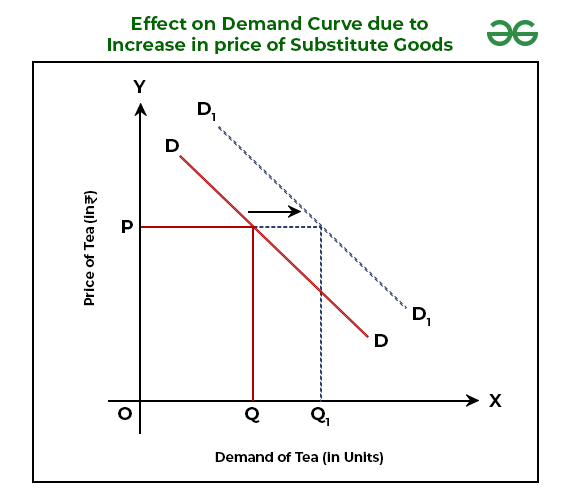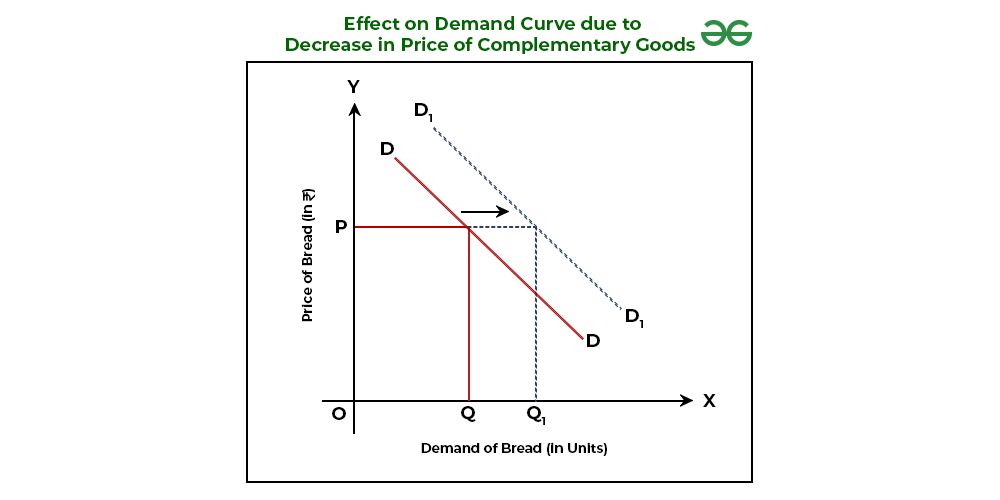Substitute Goods and Complementary Goods are two economic concepts describing the relationship between two or more different products in terms of their demand and consumption patterns. Substitute goods are the goods that can be used in place of one another; however, Complementary goods are the goods that can be used together. It is essential to understand the relationship between substitute goods and complementary goods, especially for organisations and policymakers. It is so because the relationship between these goods helps businesses and policymakers in predicting consumer behaviour, setting prices, and developing marketing strategies.
Geeky Takeaways:
- Substitute Goods are those goods which are used in place of one another to fulfill a specific need or want. For example, Coke and Coca-Cola.
- Complementary Goods are those goods which are used together to fulfill a specific need or want. For example, TV and remote.
- Cross Demand helps in determining the demand of a given commodity when the price of other related commodities changes.
- A commodity’s demand is only affected by a change in the price of related goods and not the price of unrelated goods.
What are Substitute Goods?
The goods which can be used in place of one another to satisfy a specific want, like tea and coffee are known as Substitute Goods. The price of substitute goods directly affects the demand for a given commodity.
For example, if the price of a substitute good (say, coffee) increases, then demand for the given commodity (say, tea) will increase as compared to coffee.

In the above graph, the price of the substitute good (coffee) is shown on the Y-axis, and demand for the given commodity (tea) is shown on X-axis. When there is an increase in the price of coffee from OP to OP1, then the demand for tea will also increase from OQ to OQ1.
What are Complementary Goods?
The goods which are used together to satisfy a specific want, like bread and butter are known as Complementary Goods. The price of a complementary good and demand for the given commodity inversely relates to each other.
For example, if the price of a complementary good (say, butter) increases, then demand for the given commodity (say, bread) will decrease as it will become costlier for the consumer to use both goods together.

In the above graph, the price of the complementary good (butter) is shown on the Y-axis and demand for the given commodity (bread) is shown on X-axis. When there is an increase in the price of butter from OP to OP1, then the demand for bread will also increase from OQ to OQ1.
Note: The above shown graphs are not demand curves. They only show the relationship between demand for a given commodity and price of the related good.
Difference between Substitute Goods and Complementary Goods
| Basis | Substitute Goods | Complementary Goods |
|---|---|---|
| Meaning | The goods which can be used in place of one another to satisfy a specific want. | The goods which are used together to satisfy a specific want. |
| Nature of Demand | Substitute goods have competitive demand. | Complementary goods have joint demand. |
| Slope | The demand curve for substitute goods is upward sloping. | The demand curve for complementary goods is downward sloping. |
| Relation | The price of one substitute good has a positive relationship with the quantity demanded of another substitute good. | The price of one complementary good has a negative relationship with the quantity demanded of another complementary good. |
| Example | Pepsi and Coca-Cola, Tea and Coffee, etc. | Bread and Butter, Tea and Sugar, etc. |
Demand is not affected by Change in Price of Unrelated Goods
A commodity’s demand is only affected by a change in the price of related goods (substitute goods and complementary goods). If there is a change in the price of unrelated goods, then there is no impact on the demand for a given commodity. Unrelated goods are the goods which are not linked with the demand for a given commodity. For example, if there is an increase/decrease in the price of bottle, then there will be no impact on the demand for laptop.
What is Cross Demand?
By keeping other things constant, the relationship between the demand for a given commodity and the price of related commodities is known as Cross Demand. In simple terms, cross demand helps in knowing how much quantity of a given commodity will be demanded at different price levels of a related commodity (substitute good or complementary good). Cross Demand can be expressed as:
Dx = f(Py)
Where,
Dx = Demand for the given commodity
f = Functional Relationship
Py = Price of the related commodity (substitute or complementary)
Cross Demand can be either Positive or Negative
- In the case of substitute goods, cross demand is positive. It is because the demand for a given commodity varies directly with the prices of substitute goods.
- In the case of complementary goods, cross demand is negative. It is because the demand for a given commodity varies inversely with the prices of complementary goods.
Cross Price Effect on Demand Curve
The effect on the demand for a given commodity because of a change in the price of a related commodity is known as Cross Price Effect. In simple terms, the cross price effect originates from substitute goods and complementary goods. The effect of change in the prices of substitute goods and complementary goods can be explained as follows:
A. Change in Price of Substitute Goods
An increase or decrease in the price of substitute goods has a direct impact on the demand for a given commodity.
1. Increase in Price of Substitute Goods: When there is an increase in the price of substitute goods (say, coffee), the demand for the given commodity (say, tea) will also increase from OQ to OQ1, with the same price OP. It results in a rightward shift in the demand curve of the given commodity (tea) from DD to D1D1.

2. Decrease in Price of Substitute Goods: When there is a decrease in the price of substitute goods (say, coffee), the demand for the given commodity (say, tea) will also decrease from OQ to OQ1, with the same price OP. It results in a leftward shift in the demand curve of the given commodity (tea) from DD to D1D1.

B. Change in Price of Complementary Goods
An increase or decrease in the price of complementary goods has an inverse impact on the demand for a given commodity.
1. Increase in Price of Complementary Goods: When there is an increase in the price of complementary goods (say, butter), the demand for the given commodity (say, bread) will decrease from OQ to OQ1, with the same price OP. It results in a leftward shift in the demand curve of the given commodity (bread) from DD to D1D1.

2. Decrease in Price of Complementary Goods: When there is a decrease in the price of complementary goods (say, butter), the demand for the given commodity (say, bread) will increase from OQ to OQ1, with the same price OP. It results in a rightward shift in the demand curve of the given commodity (bread) from DD to D1D1.

Leave a Reply